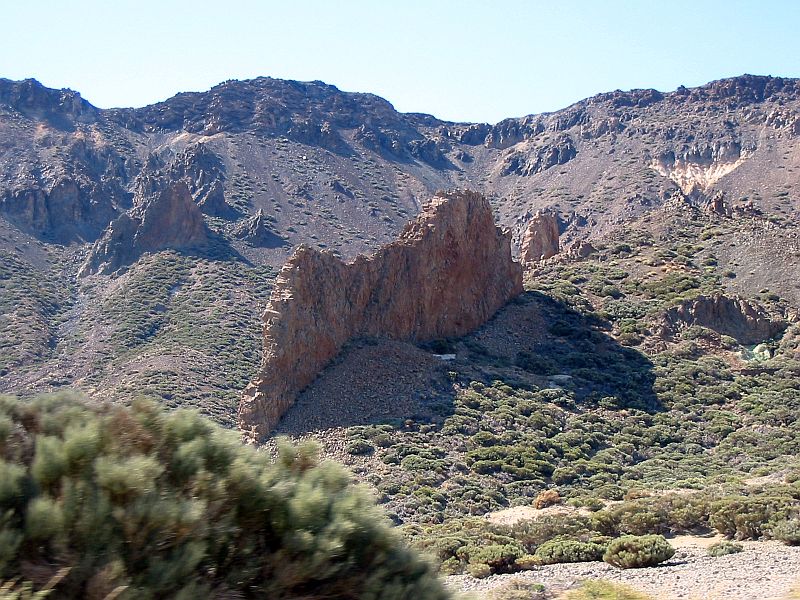Dikes are sheetlike igneous intrusions. We usually see them in two dimensions but sometimes they form prominent threedimensional landforms.
Here is a photo of a dike I saw while spending a vacation in Tenerife. I didn’t have an opportunity to stop there and inspect it more closely. Even the photo is taken while driving but it should be understandable that this dike forms really impressive wall. The photo is taken inside the Las Cañadas caldera which surrounds the Mount Teide which is a highest volcano in Europe and second overall only after the volcanoes of Hawaii (Mauna Loa and Mauna Kea). I mean measured from the base of the mountain which is kilometers beneath the waves.
How is it possible that such thing survived the caldera collapse? Well, the caldera there is a bit unusual. It is not a depression of a vertical collapse. It was more like an enormous landslide. I don’t know for sure but probably the dike which is almost perpendicular to the caldera wall right behind it (and therefore more or less parallel to the direction of landslide) just survived the event and was later preserved better than the surrounding rocks because it is made of hard rock, not loose pyroclastic material.
I have also written about syncline in 3D and another interesting landform in the Las Cañadas caldera which is claimed by some to be the most photographed rock in the world — The Cinchado.

